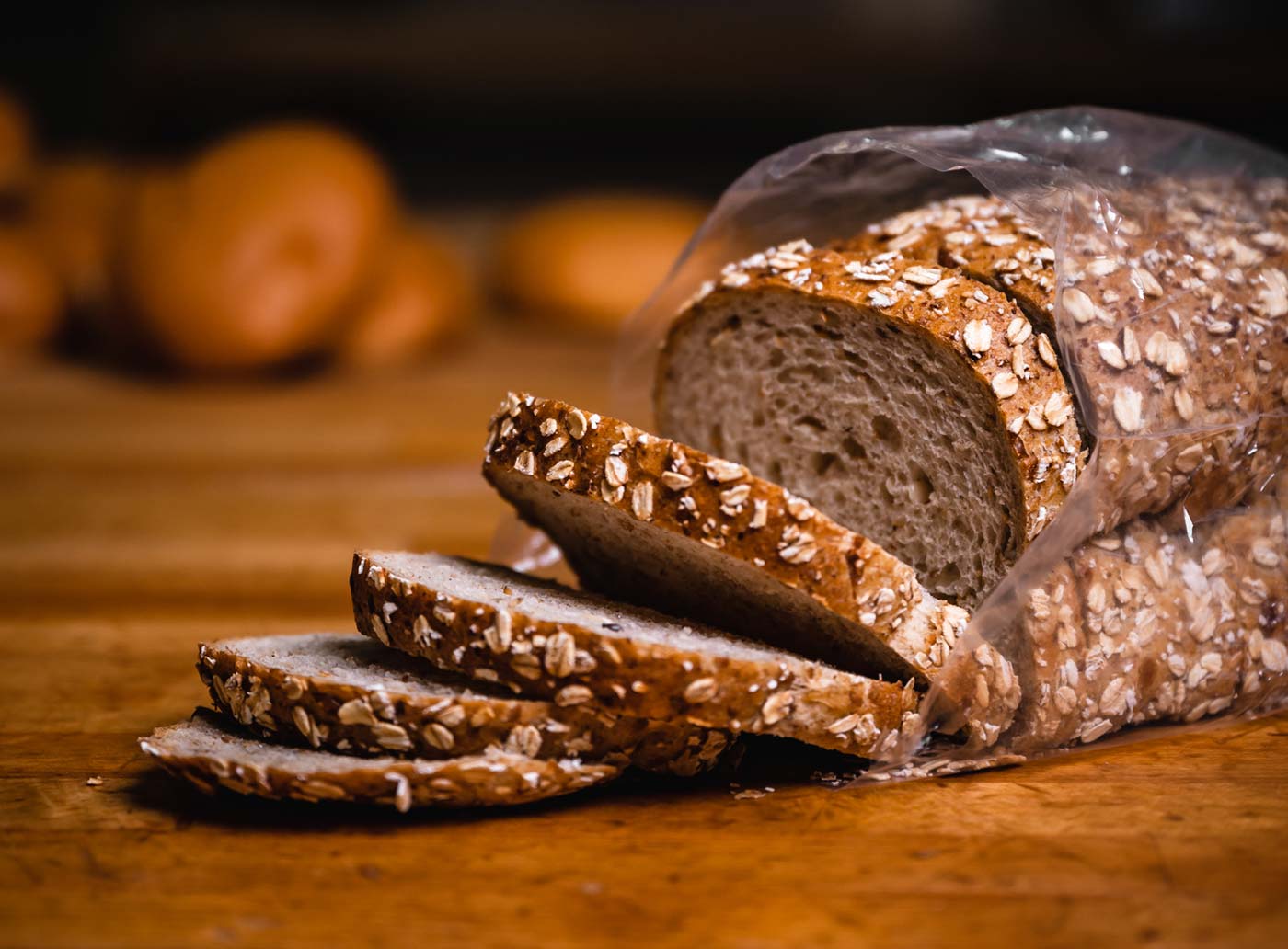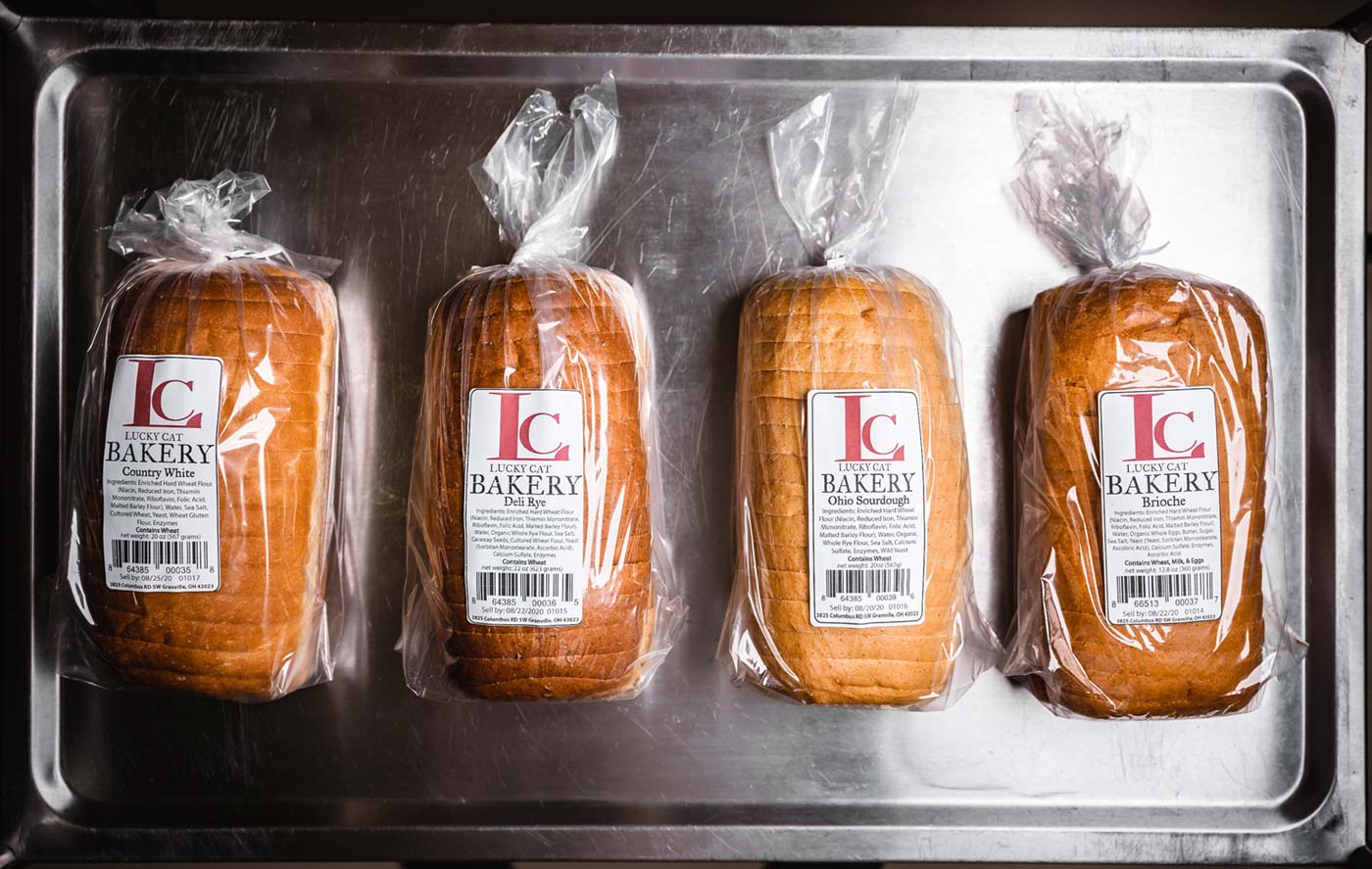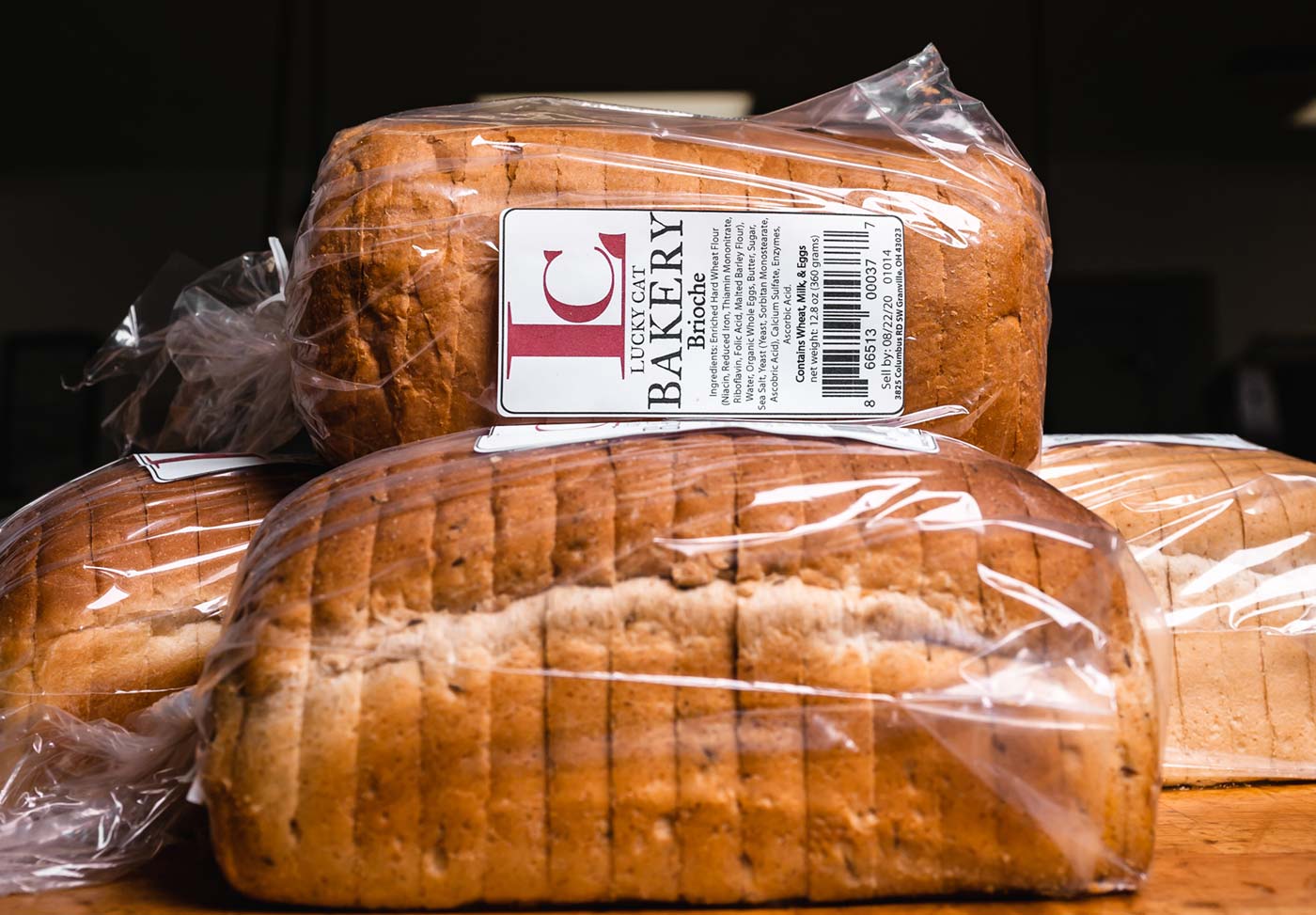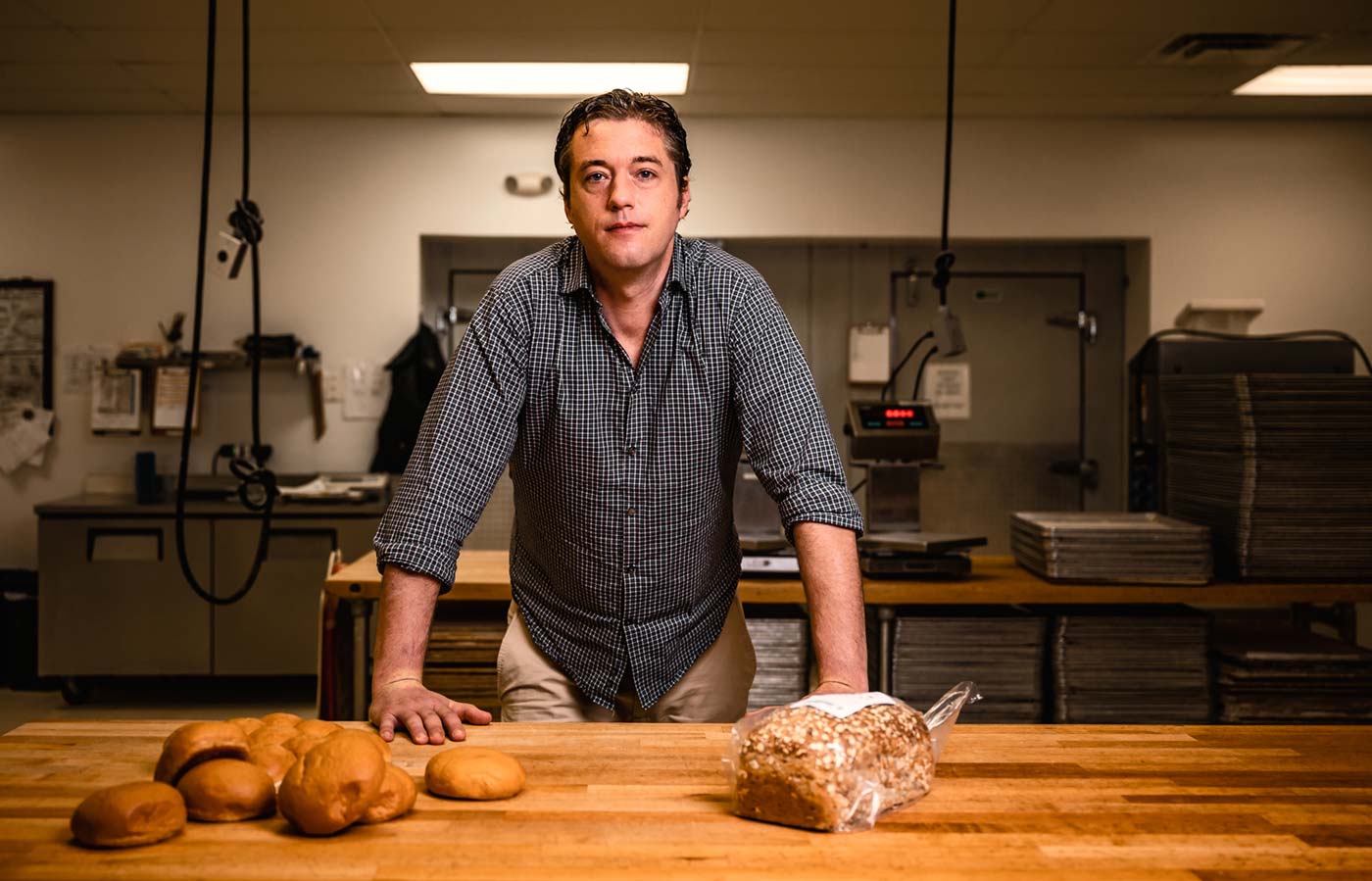At Lucky Cat Bakery, the Bread and the Business are Made from Scratch
If there is a recurring theme in Andrew Semler’s career, it is that he dives headfirst into endeavors with little or no experience and figures things out on the fly. He started a sushi bar on the East Coast with a friend, knowing almost nothing about the process, or even where to get the freshest fish.
After moving to Pataskala, he decided to grow vegetables on a small farm called Lucky Cat (yes, there were several cats on the premises), again with no experience. To make some cash on the side, he bundled up his fennel, baby lettuce and eggplant and headed to the farmers market in nearby Granville. Growing leafy greens in soil that’s heavily clay was a challenge, as was trying to sell out-of-the-ordinary produce.
Slim profits prompted a change. He started baking baguettes, using a recipe from a book. “I had never even eaten that much bread,” Semler said, “until I started making it.” After a few false starts, his product took off, its quality quickly driving demand. Lucky Cat Bakery was born.
From such humble beginnings in 2007, Lucky Cat now offers more than 30 products, with a growing distribution list, most recently adding seven Central Ohio Kroger stores, which had problems filling their shelves with baked goods due to the coronavirus.
And Semler hasn’t forgotten his roots; you can still find Lucky Cat at farmers markets on Saturdays. Production Manager Darcy Predieri has the pleasure of being at these markets in Worthington, Granville and Clintonville.
“The farmers markets are a reminder that our bread is present in so many people’s daily lives,” she said. “It is an incredible experience to hear that a loaf of our bread is someone’s favorite way to start the morning.”
You can now find Lucky Cat bread in coffee shops and dozens of restaurants, as well as at large retailers, Ohio State University, and school cafeterias. Semler grows the business one client at a time. “We call it ‘bread bombs.’ We just show up at a place and have a bunch of samples and just try to sell it to [the client].”
Generating this much business required finding a factory space on the outskirts of Granville to create a dedicated bakery in 2009. Workers clock in at 5am to turn out thousands of loaves of bread, buns, rolls and scones a week.
Day-to-day operations also required back-end spreadsheets and billing, a task with which business manager Nate Roderick helped Semler. The software, like the bread, was built from scratch.

Breads such as this multigrain loaf include ingredients from a variety of Ohio farms.

Expanding the retail outlets for Lucky Cat breads has been part of the strategy to deal with reduced restaurant business during the pandemic.
MAINTAINING LOCAL TIES
While Semler was attending culinary school in New York City in the late 1990s, he embraced the local food movement, which he still adheres to. He learned then that bluefin tuna caught and served the same day doesn’t taste the same as after it has been processed two days later.
The same is true today for the cream and milk used at Lucky Cat, which come from Ohio’s Snowville Creamery. The bakery relies on Ohio farmers for a variety of ingredients. Stutzman Farms in Millersburg provides whole-wheat flour, rye flour, rolled rye and rolled spelt to order. Green Field Farms in Wooster provides free-range, organic eggs. The slow-churned butter, which is 88% butterfat, comes from Minerva. The honey and maple syrup used by the bakery also come from Ohio.
The goal, according the Lucky Cat website, is a product free from synthetic dough conditioners, food coloring, artificial flavors and other additives. Roderick said that since bread is a product with few ingredients, “We source the highest-quality ingredients we can reliably procure, at a significantly higher cost than lower-quality ingredients. We also use pre-ferments and slow fermentation techniques to allow the bread to naturally develop its structure, flavor and aroma. There is no way to imitate the resulting quality of crumb and crust that these traditional fermentation techniques produce.”
One major change in the production process occurred when Lucky Cat started using a natural mold inhibitor and then added natural enzymes that keep the bread soft. Now the bakers are able to start work at 5am, and no bread that gets baked that day is delivered until the next day. This makes the bakers’ shifts easier, and the bread lasts longer. Whereas they used to bake bread in small batches, they now can make big batches, have inventory and send it out as needed.
“We used to bake everything every day. It would be packaged by 7, 8 o’clock in the morning. and then it would go out in the truck. That really wasn’t working. It was really difficult to retain
employees, because the night shift is horrible. And our bread would basically go stale in two days,” Semler said.

The bakery turns out 30 artisan products, including breads, buns, rolls and scones.
ADAPTING TO CIRCUMSTANCES
Lucky Cat Bakery, like many other businesses, has taken a financial hit in 2020. “Without the PPP [Paycheck Protection Program] loan, we would have closed the doors,” Semler said. “There’s no point in doing sales to restaurants because half of them are closed.” Selling to retail outlets, which had their bread supply lines disrupted, was another key to the company’s survival.
The pandemic also prompted Semler and company to take a hard look at the day-to-day operations and work to fix any flaws. “We streamlined our product line so the labor was easier. We got rid of the high-labor, low-profit items such as baguettes and the sourdough batards,” Semler added.
Though Semler created the brand, he is quick to point out that Lucky Cat has evolved into something bigger and better. “No one needs to know me. I’m not Lucky Cat,” Semler laughs.
In a previous career, Semler worked at a small restaurant in Provincetown, Massachusetts, where he couldn’t even take a day off. He was too important, too essential. He learned from that. “The goal of this [company] is to make something big enough that I don’t have to be essential.”
He gives full credit to the members of the production team who turn out the artisan bread. “It is a really difficult job to make bread the same every day,” Semler adds, noting how time-intensive making good bread is. Most big bakeries have lines where humans don’t touch the product, so they can make a loaf of bread for a dollar. Lucky Cat doesn’t do that.
“I developed the bread, but the workers make it and give me feedback,” he said. “We build it together.”
- Learn more about Lucky Cat’s artisan breads at luckycatbakery.com.




